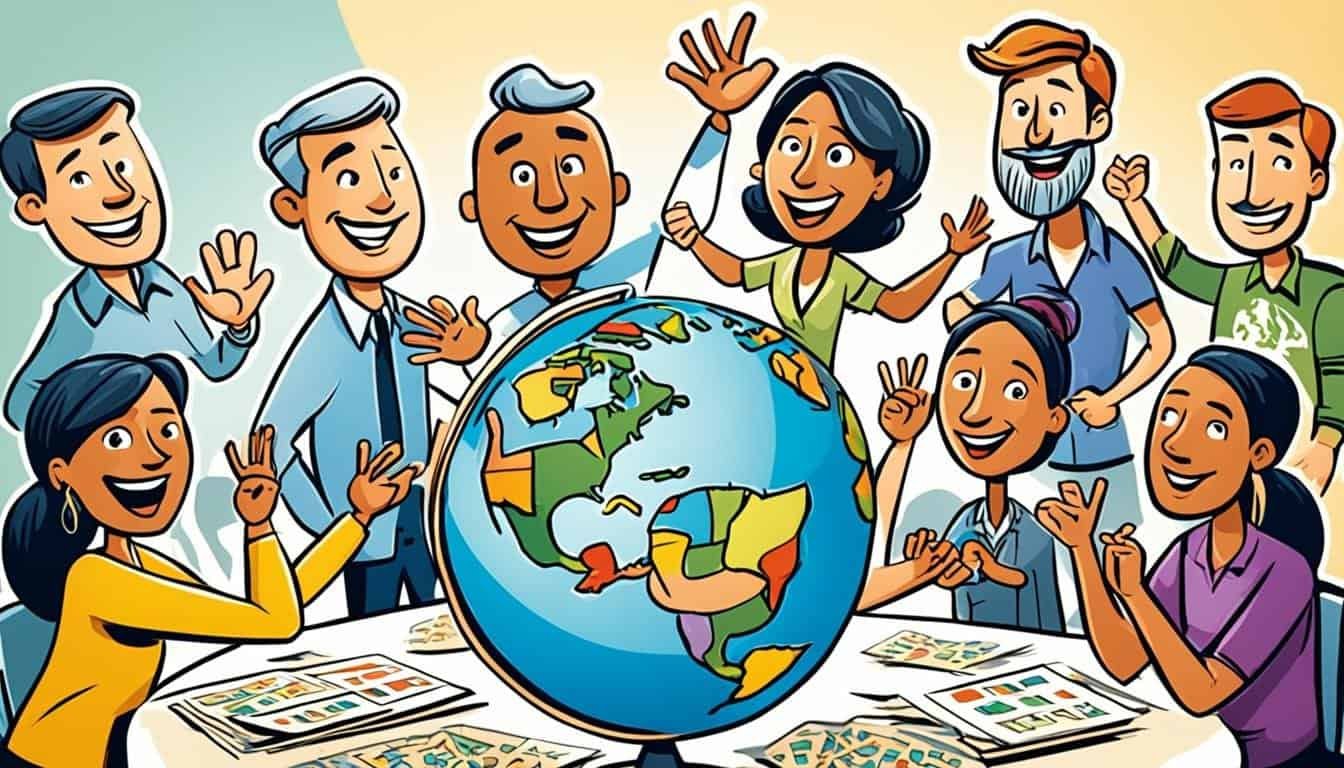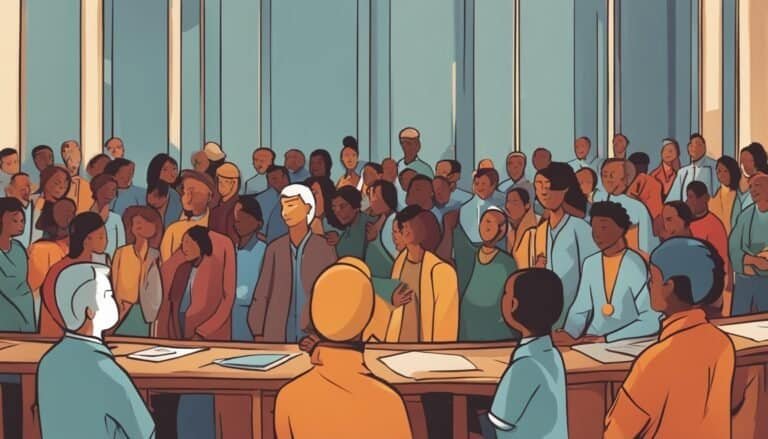Cultural Differences in Conflict Resolution
“Culture makes people understand each other better. And if they understand each other better in their soul, it is easier to overcome the economic and political barriers. But first, they have to understand that their neighbor is, in the end, just like them, with the same problems, the same questions.” – Paolo Coelho
Exploring cultural diversity in conflict resolution shows how our cultural backgrounds shape how we solve disputes. With more than one in four Americans being Hispanic or a person of color, and this number set to rise, understanding multicultural conflict management is key.
The U.S. is changing, and so are the conflicts it faces. Agencies and groups must learn more about cultural differences to handle these conflicts. It’s vital to recognize and address these differences to solve cross-cultural disputes and build a united society.
These conflicts can be tricky because of the deep-rooted cultural norms. Even small disagreements can grow into big issues because of these differences. To tackle these, we need to learn about different cultures and change how organizations work to fit everyone’s norms.
By teaching cultural awareness and talking openly, we can stop conflicts before they start. This way, we can build a society that values everyone’s culture.
Key Takeaways
- Cultural diversity in conflict resolution is essential for managing multicultural conflict management in diverse societies.
- The U.S. population’s demographic shift necessitates better understanding of cultural differences to resolve cross-cultural disputes.
- Cultural conflicts often have complex dynamics from varying cultural expectations and behaviors.
- Effective conflict resolution involves probing for cultural dimensions and adapting to different cultures.
- Training, education, and inter-cultural dialogue are vital for preventing and managing cultural conflicts.
- Organizational practices should be inclusive and sensitive to the cultural norms of diverse individuals.
- Maintaining healthy relationships within an organization or society requires understanding and managing cultural differences.
Understanding Culture and Its Impact on Conflict
Culture shapes our identities and how we interact with others. It plays a big role in conflicts. While it can make human connections richer, it can also cause problems when different values and norms clash. It’s key to understand culture’s complex layers to solve conflicts.
Defining Culture
Culture includes race, ethnicity, gender, religion, and where we’re from. These elements create our cultural identities. It’s always changing and adds meaning to our lives. Cultural messages tell us what’s important and our role in society.
This constant change makes cultural conflicts complex. We need to understand many cultural layers to get through them.
Cultural Assumptions
Conflicts often happen because of different cultural views on values and norms. We might see things differently because of our own culture. For example, direct talk in one culture might be seen as rude elsewhere.
Also, culture is too complex to be summed up in generalizations. Knowing about different cultures helps us deal with conflicts better.
Cultural Identities
Our cultural identities shape how we see, act, and interact in conflicts. They’re shaped by many things like our generation, social class, and politics. When these identities feel threatened, they can make conflicts worse.
So, knowing about the cultural side of conflicts is key. It helps us understand what’s driving people’s actions and how to talk things out.
In the end, being aware of culture and sensitive to it is crucial for solving conflicts. It helps us connect better in a world where we’re all more connected.
Cultural Conflict: Causes and Dynamics
Understanding cultural conflict is key to getting along in a global world. When different cultures meet, they often face challenges. Knowing what causes these conflicts helps us manage them better.
Identifying Cultural Conflicts
Spotting cross-cultural disputes means watching for small signs of big cultural issues. Often, it starts with small disagreements over little things. Studies show that making deals with other cultures can lead to worse results than within the same culture.
Cultural conflicts in talks often come from using stereotypes and seeing things through our own culture’s eyes. For example, a Japanese person’s silence might be misunderstood by someone from Brazil, who values being more open in talks.
Dimensions of Cultural Conflicts
Cultural conflicts touch on many levels, like content, relationship, and cultural values. Knowing these areas helps us understand why conflicts happen. Content issues are about real problems, while relationship issues come from not getting along in communication.
Cultural values, like valuing time in America versus building relationships in India, also play a big role. Seeing these differences helps us find the right way to solve conflicts. This way, we can make strategies that fit each conflict’s unique situation.
Good communication across cultures means understanding what causes conflicts and how they affect teams. Things like language, values, and beliefs shape how people work together in diverse teams. So, training in cultural competence is key.
Creating a welcoming space and using conflict resolution methods that respect cultural differences helps teams work better together. This way, diverse teams can bring new ideas and innovation to the table.
Cross-Cultural Communication Strategies
Effective cross-cultural communication is key to avoiding misunderstandings and improving teamwork in diverse groups. Knowing how different cultures communicate can greatly help in solving conflicts and making organizations successful.
High-Context vs. Low-Context Communication
High-context communication leans on hidden messages and nonverbal signals, seen in places like Japan and China. On the other hand, low-context communication, found in the U.S. and Germany, focuses on clear words and being direct. It’s vital to understand these differences to manage cross-cultural talks well.
Studies say that 45% of cross-cultural conflicts come from communication issues. This shows how important cultural awareness is. Adjusting to new ways can make people feel out of place. But, being flexible instead of trying to be someone else can make communication better and more real.
Nonverbal Communication Cues
Nonverbal signals are key in cross-cultural talks. Things like gestures, facial expressions, and body language can change a lot from one culture to another. For example, not looking someone in the eye might be polite in some places but not in others.
Training programs that focus on cultural awareness can boost employees’ knowledge of cultural norms by up to 67%. This knowledge leads to more polite interactions and helps in understanding nonverbal signs in conflicts, cutting down on misunderstandings.
Research shows that diverse teams that handle cross-cultural conflicts well can see up to a 23% boost in innovation and creativity. Using strategies like active listening, cultural mentorship, and flexible ways to solve conflicts can help in navigating cross-cultural situations successfully.
Probing for the Cultural Dimension in Conflicts
Exploring cultural factors in conflict resolution is key. We must look closely at cultural influences to find a better way to solve disputes.
First, we need to see how cultural differences cause workplace conflicts. Cultural clashes add a new layer to disputes, often from different values. By understanding these cultural backgrounds, we can see how they affect work ethics, communication, and solving conflicts.
In diverse workplaces, people from different cultures may find it hard to communicate. Signs like ongoing disagreements and strong feelings without clear issues might show cultural conflicts. So, learning about different cultures and changing work practices to fit diverse norms is vital.
Research, like Ting-Toomey’s face-negotiation theory, shows how culture shapes how we handle conflicts. For example, individualistic cultures tend to use dominating styles, while collectivist cultures prefer other ways of solving conflicts. This shows why it’s important to understand cultural differences in conflicts.
To keep relationships strong in a diverse society, teaching about cross-cultural conflict is key. Working with people and understanding their cultural backgrounds can make conflict resolution more inclusive and caring. Indeed, understanding cultural dimensions helps us tackle conflicts in a complete way.
Learning and Adapting to Different Cultures
Learning about different cultures is a journey that never stops. It means getting to know new things and changing how we act to get along with people from other cultures. This process is made better with programs and personal experiences.
Educational Programs and Training
Programs and training teach us about cultural differences. They show how these differences affect solving conflicts, talking to each other, and working together. This kind of learning makes it easier to communicate, work together, and build strong relationships with people from around the world.
Knowing how to adjust to different time zones and work patterns is key. Training that teaches us to change our ways based on the culture helps us become more culturally smart. This skill makes our workplaces more creative and better at solving problems, giving us an edge in the global market.
Sharing Experiences
Talking about our own experiences with different cultures is a great way to learn. It gives us real-life examples that books can’t match. Thinking about our interactions helps us spot and deal with any biases we might have, making us more sensitive to culture.
Working with people from various backgrounds, watching how they live, and getting their feedback is very valuable. Building trust and respect with others makes our teamwork better. Doing these things helps us adapt to new cultures and creates a workplace that welcomes everyone.
Case Studies: Real-World Examples of Cultural Conflicts
Looking at real-world examples helps us learn how to handle cultural conflicts well. Two key cultural conflict case studies stand out. One is from Kenai, Alaska, and the other is about business talks in India. They show how important it is to be sensitive and aware of different cultures.
The Kenai, Alaska Case
The Kenai Alaska cultural celebration is a clear example of how not understanding culture can cause problems. At first, the event planners didn’t include the local Native Indian tribe’s heritage. This made the community upset. But, by adding the tribe’s culture to the event, peace was brought back. This shows the importance of making sure everyone feels included in multicultural events.
Business Negotiation in India
Dealing with Indian business negotiation dynamics shows how complex things can get. In India, business talks often go at a different pace and value building relationships a lot. To succeed, you need to understand and adjust to these cultural differences. This shows how knowing and respecting local customs can help in doing business across borders.
Cultural Sensitivity in Organizational Practices
Making a workplace inclusive takes effort and action. It’s key to have inclusive workplace strategies that show the value of diverse cultures.
Training on how to handle conflicts in diverse teams helps improve conflict skills. This leads to better conflict resolution. Cultural awareness training teaches employees about different communication styles and values. This reduces conflicts and misunderstandings.
Mediation services are great for ongoing conflicts, especially those from cultural differences. Team-building activities also help break down cultural walls. This makes the workplace more united and collaborative.
Diversity and inclusion programs do more than just raise awareness. They create a space where employees learn to value diverse views. Having different ways to solve conflicts, like anonymous suggestions or team meetings, encourages everyone to speak up. This makes sure everyone feels heard and valued.
Cross-cultural development programs are very useful. They give insights into different cultures. This helps in solving conflicts by making team members understand and respect each other’s backgrounds.
Having diverse leaders shows a strong commitment to valuing everyone’s differences. This kind of leadership helps create policies that support equality and inclusivity. Knowing about different cultural norms and how to solve conflicts is key to managing them well.
It’s important to tackle biases and stereotypes. These can lead to unfairness and block teamwork. Creating a space where talking about these biases is safe is vital. Trained mediators or facilitators can also help bridge cultural gaps. This leads to fair discussions and builds understanding and empathy among team members.
Conclusion
In today’s world, it’s key to blend cultural awareness into how we solve conflicts. We’ve talked about how knowing different cultures and how to talk across them is vital. This helps us live and work together better.
Over 8,000 businesses use EasyLlama’s training to improve how they handle conflicts and talk to each other. These courses teach people to manage their feelings and communicate better. This leads to solving conflicts before they start and making workplaces more united.
Our look into how different groups solve conflicts shows us what works everywhere and what’s specific to each culture. Things like being fair, open, and making decisions together are key. Leaders who can solve conflicts well make places where everyone does well. They lower the chance of problems and make things work better together.
As we go forward, keeping cultural awareness in mind will be key. It’s important for solving conflicts and keeping peace in our diverse world.
Source Links
- Summary of "Resolving Conflict in a Multicultural Environment"
- Conflict Resolution: Cultural Understanding Imperative
- Culture and Conflict
- Articles
- The role of culture and personality in choice of conflict management strategy
- How to Resolve Cultural Conflict: Overcoming Cultural Barriers at the Negotiation Table
- How to Resolve Cultural Differences in a Team? | Urban Challenger
- Conflict Management in Cross-Cultural Work Environments — Conflict Resolution Consulting
- The Challenge of Cross-Cultural Conflict and Resolving Differences | Hult International Business School
- Resolving Conflict in a Multicultural Environment – Carrot Global Vietnam
- A Meta-Analysis of the Cultural Propositions about Conflict Management Styles in Face-Negotiation Theory
- Cross-border conflicts: mediating across cultures
- How to adapt communication for cultural differences, and why is it so important?
- Unlocking Global Potential: Key Cultural Adaptation Strategies For Success | Learnexus
- Case Studies in Intercultural Communication
- Lessons Learned from Cultural Conflicts in the Covid-19 Era
- Strategies for Conflict Resolution in a Diverse Workplace — Loeb Leadership
- Addressing Cross-Cultural Conflicts in the Workplace – Polonious
- Conclusion to Conflict Resolution And Management | Easy Llama Training
- Correlates of conflict resolution across cultures







